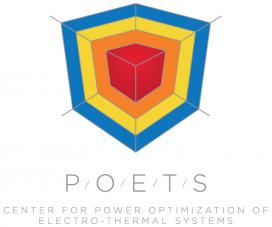2D Boiling Test Chamber Enables Better Characterization of Cooling Technology
Development of a two-dimensional boiling test chamber is enabling researchers to better characterize the thermofluidic performance of various porous materials at the Center for Power Optimization of Electro-Thermal Systems (POETS), an NSF-funded Engineering Research Center (ERC) based at the University of Illinois.
Porous materials hold great promise in contributing to thermal management in electronics. Researchers now can test and characterize the thermo performance of various porous materials through a new 2D boiling test chamber at POETS. The new set up offers a more accurate representation of radial flow in a vapor chamber, which is a heat pipe that can spread heat in two dimensions, and will aid in the design of electronic systems with efficient heat dissipation.
The ongoing miniaturization of electronic systems presents significant challenges in managing the heat generated by components while operating within space and cost constraints. Small hotspots, in particular, can bedevil system designers, straining the limits of existing cooling technologies.
POETS researchers have been investigating the use of wicks made from microporous copper inverse opal for managing the transfer of high heat away from components. Testing and characterizing the technology presents its own challenges, including how to replicate 2D wicking without flooding the entire chip. The new boiling test chamber uses a liquid dam sealed against the test chip to prevent flooding.



